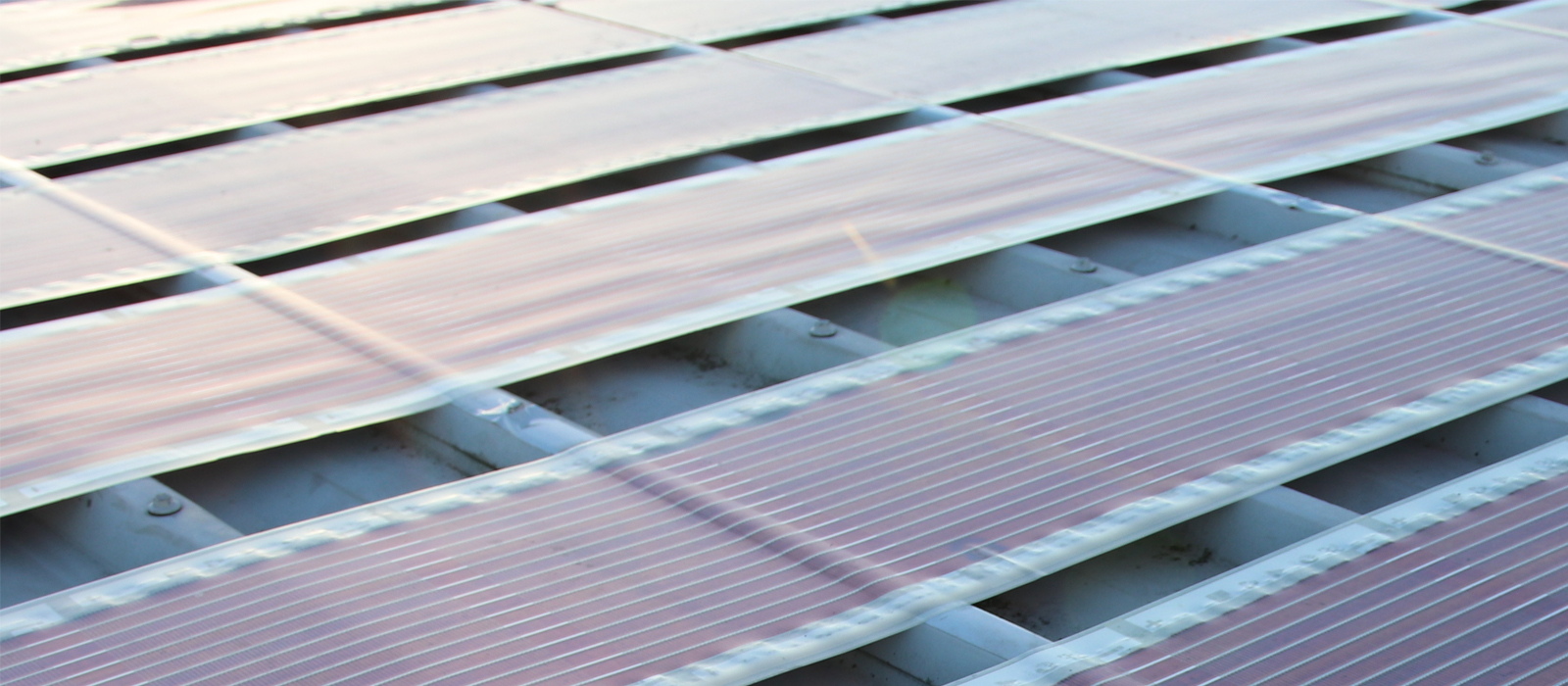
Research
Themes
Printed Solar Cells
In late 2018 we became the first research group in Australia, possibly the world, to embark on a commercial scale installation of printed solar, in partnership with CHEP. This game-changing material is incredibly low cost, ultra thin, light weight, robust, flexible and recyclable. It's manufactured using uncomplicated, conventional print technologies along with our revolutionary electronic inks in a new form of advanced manufacturing known as functional printing.
Aimed at significantly increasing the global uptake of renewable energy technologies and dramatically reducing energy bills, this technology is the result of almost two decades of research and development.
Our partnership with the Australian National Fabrication Facility (ANFF) offers us the unique ability to develop materials and manufacture the printed solar cells entirely in-house in our Materials Node Newcastle Hub based at the Newcastle Institute for Energy and Resources (NIER).
Biosensors / The Saliva Glucose Biosensor
A biosensor is a device that detects a biological response with a high degree of accuracy and enables detection and monitoring of various health conditions.
The Saliva Glucose Biosensor is the world's first non-invasive, saliva-based glucose test for diabetes management. It measures glucose in saliva instead of blood and removes key barriers to self-monitoring such as cost, fear of pin-pricking and inconvenience.
The Saliva Glucose Biosensor is made by printing our sophisticated electronic inks onto thin film plastic using unsophisticated existing print technologies. It’s an example of functional printing - an exciting new industry which marries the old and the new to achieve low cost production of advanced materials.
In 2013 we partnered with the IQ Group Global to help translate this promising technology from the laborartory to the real world, where it can begin to help the more than 425 million people living with diabetes globally. In late 2019, the IQ Group Global were named in the top ten most innovative health companies for the Saliva Glucose Biosensor and we continue to work together towards our shared goal of ensuring noone needs to bleed to eat.
Scanning Helium Microscopy
Microscopy is an essential tool for the discovery and fabrication of new materials and devices, but can we trust what we see?
The Scanning Helium Microscope or SHeM is the world's first zero damage microscope, developed by the COE in collaboration with our research partners at the University of Cambridge's Cavendish Laboratory. Our SHeM, located in our Newcastle laboratories is one of only a four in the world.
Using a neutral helium beam, the SHeM is able to image sample surfaces causing zero damage due to the uncharged, no net spin and low polarisability qualities of helium atoms.
Representing the next major development in the field of microscopy since the electron microscope almost a century ago, the SHeM was selected from hundreds of research projects to be exhibited at the Royal Society Summer Science Exhibition in London in 2019.
Current research efforts are focussed on miniaturisng the SHeM to make it available for use in labs across the globe, and increasing the resolution of the microscope, from micron level to nano level resolution.
The University of Newcastle acknowledges the traditional custodians of the lands within our footprint areas: Awabakal, Darkinjung, Biripai, Worimi, Wonnarua, and Eora Nations. We also pay respect to the wisdom of our Elders past and present.